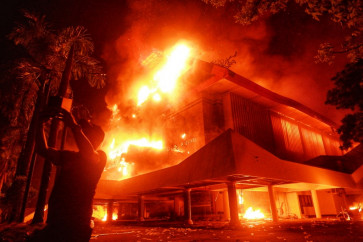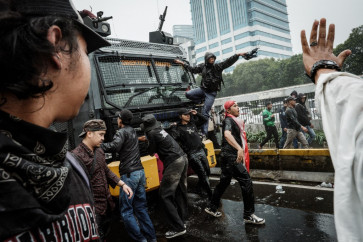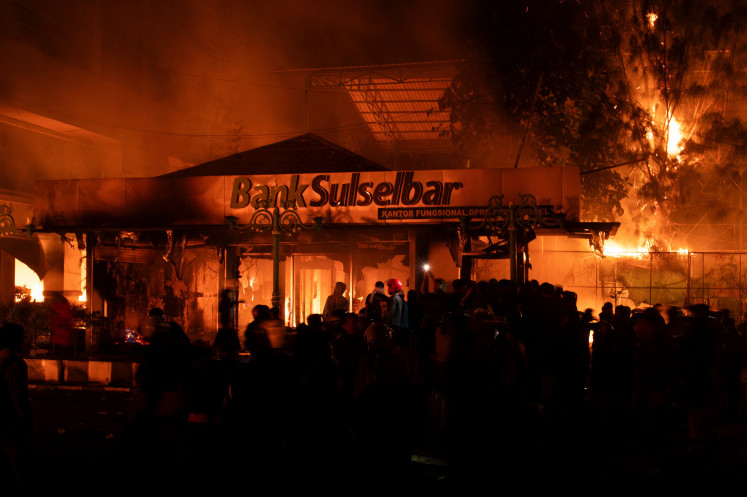Popular Reads
Top Results
Can't find what you're looking for?
View all search resultsPopular Reads
Top Results
Can't find what you're looking for?
View all search resultsHeydt's vision of Batavia
(JP/Wendra Ajistyatama)German-born and keen observer of Jakarta, Adolf Heuken, looks at Batavia through the eyes of artist Johann Wolfgang Heydt
Change text size
Gift Premium Articles
to Anyone
(JP/Wendra Ajistyatama)
German-born and keen observer of Jakarta, Adolf Heuken, looks at Batavia through the eyes of artist Johann Wolfgang Heydt.
His latest book, Paintings and Description of Batavia in Heydt's Book of 1744: Text and Commentary, is partial translation of Heydt's sketch collection, Aller Neuester Geographisch- und Topographischer Schau-Platz von Africa und Ost-Indien, with additional insights about the works and the artist from Heuken.
The original book ' which was published in Nurnberg, Germany, in 1744 ' was the first by the German draughtsman who produced the engravings while he lived in Batavia.
'Heydt was a precise drawer and surveyor. There is a painting every two to three pages [in the book], but it is not just about the pictures, it is also enriched with important information,' says the 83-year-old during the book launch event at Periplus bookstore in Kemang, South Jakarta.
Besides the Text and Commentary edition, Heuken also reprinted another very rare version.
'The reprint is authentic and copies were taken from the original book for facsimile documents. In Indonesia, there are only two copies of this facsimile version, both worth up to 20,000,' he added.
In the original book, Heydt ' on the orders of governor-general Adriaan Valcknier of the Dutch East India Company ' produced 41 engraving of various places in and around the old city, now called Kota. Heydt also made other drawings, which he published together with accurate descriptions after his return to Germany.
The reprint reveals some throwbacks from this period still exist in Jakarta. Fort Noordwijk has hardly changed since the Batavia era and can still be found across the entrance to Istiqlal Grand Mosque in Jakarta. Several items of furniture from the governor-general's Castle of Batavia are on display at the History Museum, North Jakarta.
The first drawing in the reprint is Batavia city as seen from roadstead or harbor. Here, Heydt describes his drawing with detailed pointers such as Blue Mountains, European ships, Chinese junks, Dutch church and city hall. He later completed them with full descriptions.
'The surroundings of Batavia are very large and full of all sorts of nationalities: Malays, Moors and Chinese. Each of them taxed in a special way, in order to be allowed to do business freely.
'The Chinese are the most numerous and their quarters are very crowded. Their diligence, strength, and activities have made Batavia prosperous, and without their support it would be difficult to have an easy life in Batavia,' describes Heydt on one of his sketches.
Besides the 41 drawings, Heuken's reprint also displays several beautiful drawings of Batavia by another draughtsman of the 18th century in the city, Danish Johannes Rach.
The reprint also displays three examples of Heydt's hand colored prints. The first depicts the western courtine of the Castle of Batavia toward the shipyard with flagpole (now the compound of Very Old Café, or VOC, near Pasar Ikan or Fish Market).
Along with the castle image Heuken provides a comparison of Rach's version, which was drawn about forty years after Heydt left Batavia.
A clear difference between the two versions is that Rach brought more of artistic view as compared to Heydt's strict and precise drawing.
Besides the city, Heydt also depicts the Island of Onrust, or Unrestalong with a map of the island. Heydt shared that Onrust's name came from the fact that carpenters and smiths in the island worked without intermission because they had so much work.
The draughtsman made another drawing for Ancol Battery, which was one hour away from downtown Batavia. He described the area as being peppered with some stunning spots, including beautiful walks, nice gardens and splendid houses, but there was also a swamp in which crocodiles liked to live and were often seen.
The last Heydt's engraving in the book is a special sea chart of Sunda Straits with islands and sandbanks in it.
Heuken says that Heydt's complete original book of is extremely rare because many copies have been taken apart by antique dealers who sell the drawings piece by piece.
'The price of each drawing is more lucrative than selling the whole book, which is very expensive. Hence, this reprint is very important for the history and topography of Jakarta,' he adds.
Paintings and Description of Batavia in Heydt's Book of 1744
Adolf Heuken
Cipta Loka Caraka and Kartini Collection, 2013
143 pages










